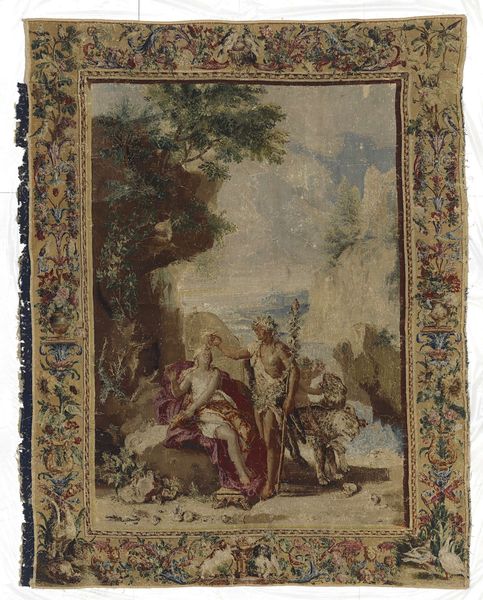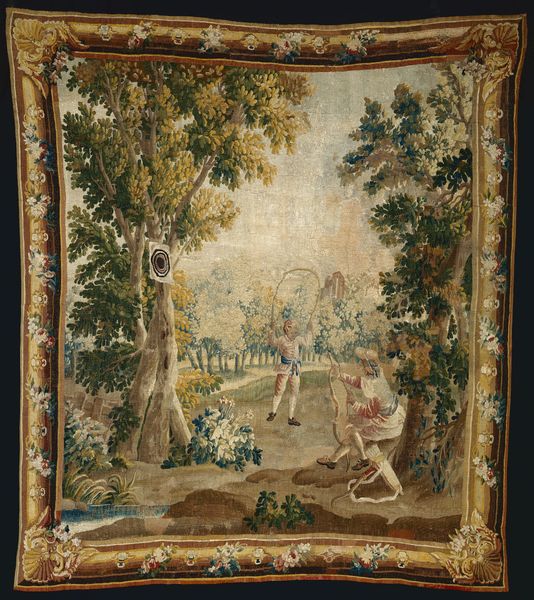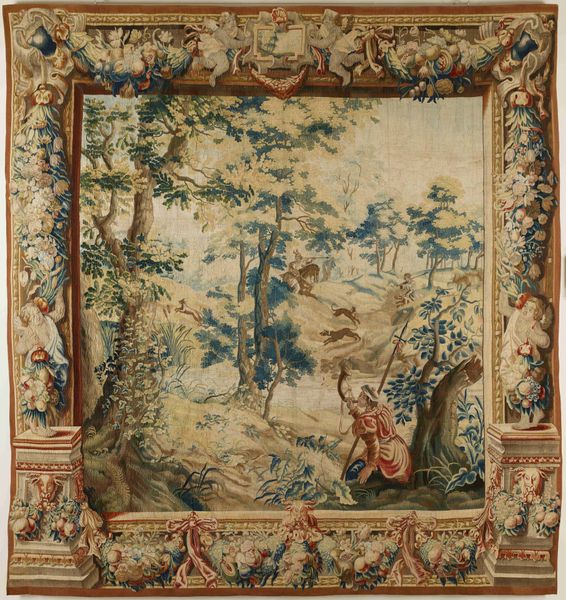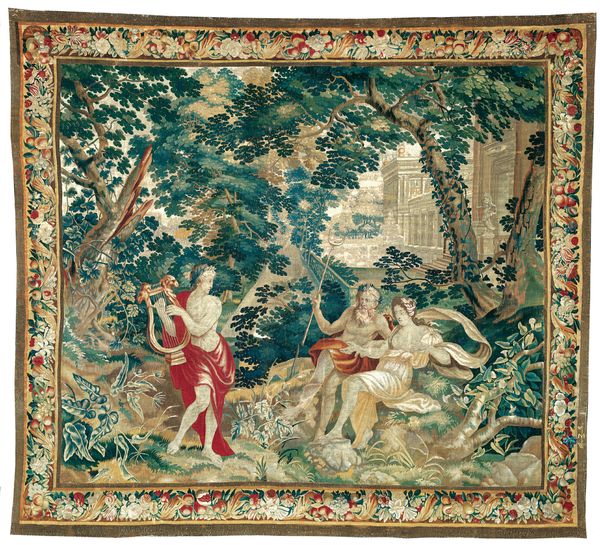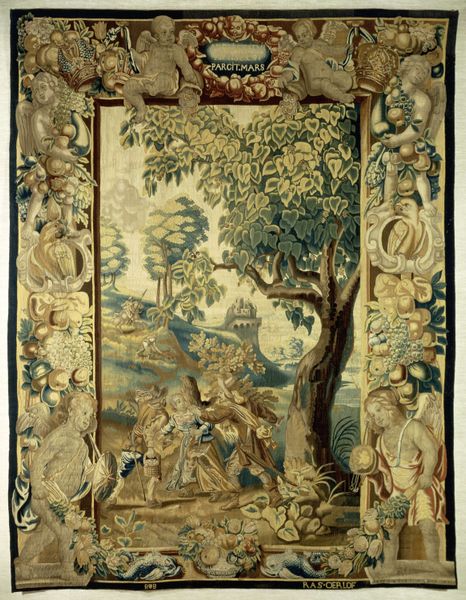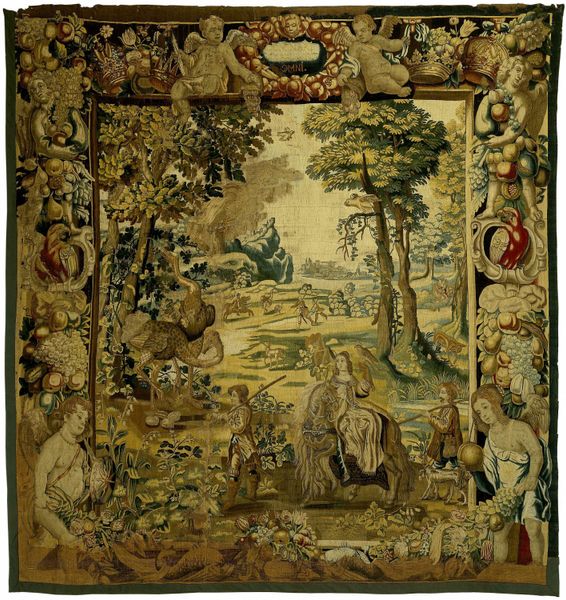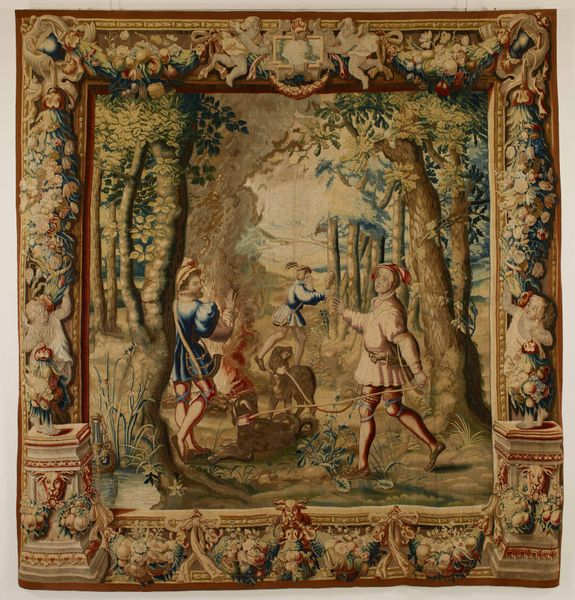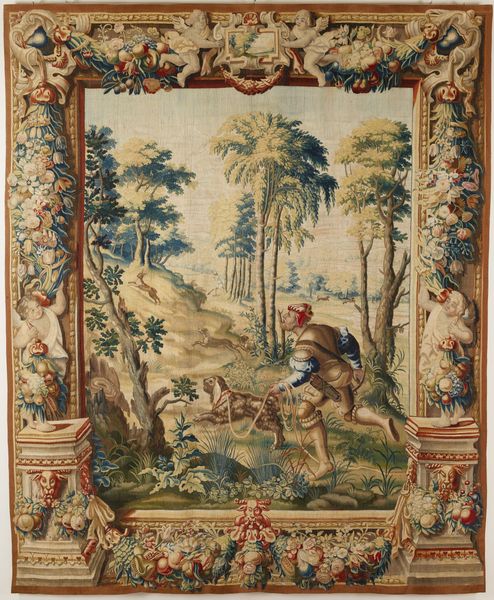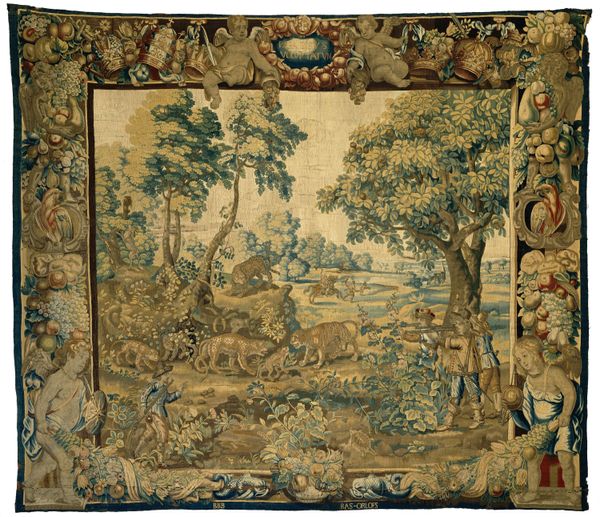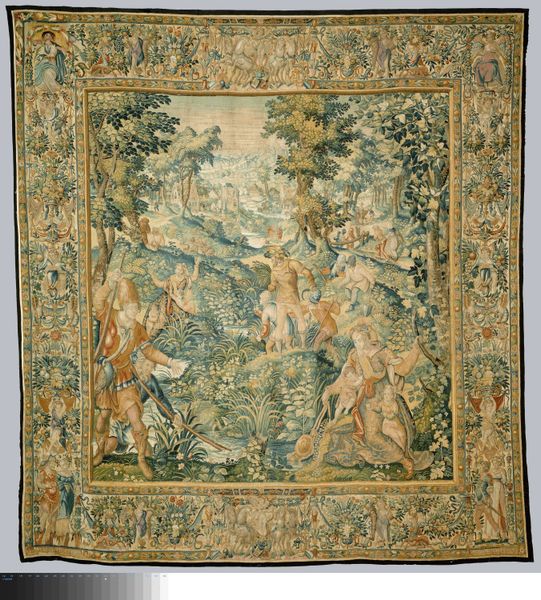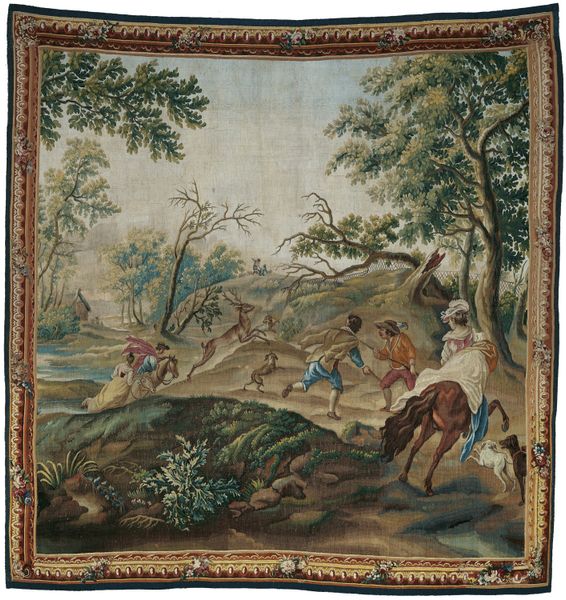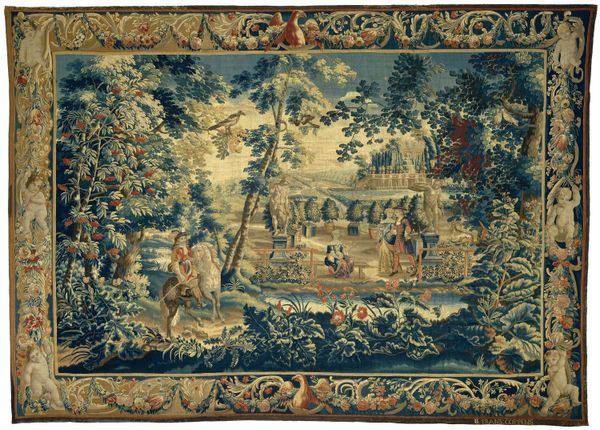
weaving, textile
#
water colours
#
narrative-art
#
baroque
#
weaving
#
landscape
#
textile
#
figuration
#
oil painting
#
history-painting
Dimensions: height 316.5 cm, height 319 cm, width 253.3 cm, width 253 cm
Copyright: Rijks Museum: Open Domain
Curator: This impressive tapestry is entitled "Acis and Galatea Discovered by Polyphemus", made by the Manufacture Royale des Gobelins around 1680-1684. Its detailed weaving depicts a dramatic scene. Editor: My initial reaction is a sense of impending doom, cleverly structured using the vertical lines of the waterfall and trees to draw your eye upwards toward the menacing Polyphemus looming over the idyllic lovers. The texture of the textile itself adds to the dramatic tension, giving the piece depth and materiality beyond a typical painting. Curator: Indeed. The placement of Polyphemus carries great psychological weight. His presence, though distant, reminds us of the vulnerability of idealized love in the face of primal forces, mirroring enduring human anxieties surrounding love and loss. Consider, too, that the subject derives from Ovid's *Metamorphoses*, reinforcing its significance in classical artistic memory. Editor: Ovid's narrative is key, framing how we view the composition. The flowing lines of the water and the lovers’ intertwined bodies create a circular rhythm, which then gets interrupted by the harsh angles of the craggy cliff and Polyphemus’s angular pose. A very Baroque contrast! Curator: Baroque drama is essential. It underscores a powerful contrast of idyllic pastoral love and its brutal interruption. The weavers were masters at embodying complex emotional narratives and cultural symbolism through visual art. Tapestries like these weren't merely decorative; they served as reminders of foundational stories, reinforcing shared cultural identity. Editor: Absolutely, and the tapestry form itself plays with perception. The texture and scale invite a close reading of the visual language - its warp and weft, we begin to appreciate how its construction mirrors and enhances the dramatic elements presented to the eye. It's more than just an image; it's an object, laden with meaning derived from its very creation. Curator: Agreed. It’s a beautiful and terrifying convergence, really—an enduring narrative captured with immense technical skill, meant to resonate with audiences through shared cultural touchstones and their primal human emotions. Editor: It really makes you think about how narrative isn't just "told" but materialized—woven into the very fabric of art, pun intended.
Comments
rijksmuseum about 2 years ago
⋮
The lovers Acis and Galatea were discovered by the one-eyed Cyclops Polyphemus, who was enamoured with Galatea. He would later kill Acis with a boulder, whereupon the young man was transformed into a river.
Join the conversation
Join millions of artists and users on Artera today and experience the ultimate creative platform.

